News Beat
News Beat reporting is an idrw.org initiative to let our Readers to report News Based on Actual facts but some how has not been reported in Main Stream Media .
SOURCE: RAUNAK KUNDE / NEWS BEAT / IDRW.ORG
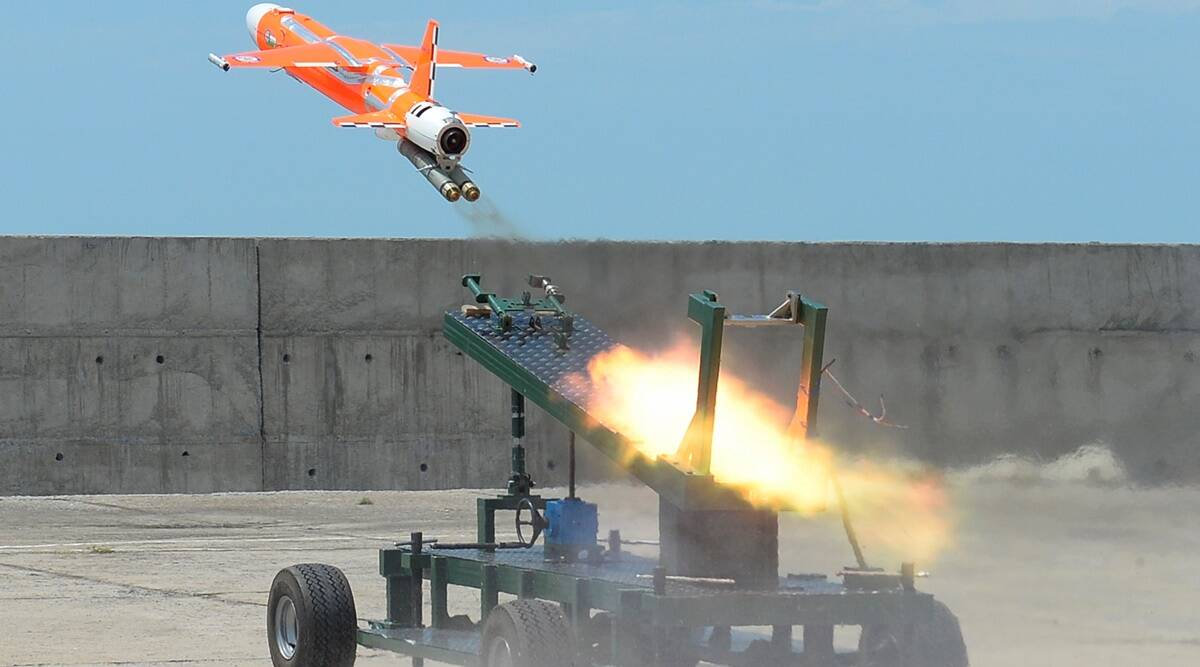
During the eighth Aerospace & Defence Manufacturing Show (ADMS) held on October 26 and 27, 2023, in Bangalore, India, the Aeronautical Development Establishment (ADE), an agency under the state-owned Defence Research and Development Organisation (DRDO), unveiled an updated configuration of the Abhyas High-speed Expendable Aerial Target (HEAT).
The original Abhyas configuration, launched in 2013, featured twin underslung boosters. However, the new configuration boasts a single underslung booster with an improved rocket motor, an extended length of 2.44 meters, and a new wingspan (specific dimensions were not disclosed).
Continue readingSOURCE: RAUNAK KUNDE / NEWS BEAT / IDRW.ORG

In a remarkable stride in India’s indigenous defence manufacturing, the Twin Engine Deck Based Fighter (TEDBF) project, designated for the Indian Navy and to be manufactured by Hindustan Aeronautics Limited (HAL), is set to receive a significant boost. The project is poised to incorporate the cutting-edge DRDO-Safran-developed 110kN engine, marking a critical milestone in India’s quest for self-reliance in defence production.
The collaborative effort between the Defense Research and Development Organization (DRDO) and Safran has reached an advanced stage, with discussions focused on establishing a comprehensive framework for the development of this state-of-the-art engine. The engine’s significance extends beyond TEDBF, as it is earmarked for deployment in the Advanced Medium Combat Aircraft Mk2 (AMCA) fighter jets, set to enter service from 2034-35 onwards. What makes this development even more noteworthy is that the engine is entirely manufactured within India, aligning with the country’s ‘Make in India’ initiative.
Continue readingSOURCE: RAUNAK KUNDE / NEWS BEAT / IDRW.ORG

The ongoing conflict in Ukraine has cast a shadow over the delivery of two Krivak-class stealth frigates, also known as Talwar-class, which were under construction for the Indian Navy in Russia. According to Alexey Rakhmanov, the Director-General of the United Shipbuilding Corporation of Russia, these frigates are now expected to be delivered by May and October 2024, respectively.
This delay is a further setback to the Indian Navy’s long-standing efforts to bolster its naval capabilities. The story of these frigates is entwined with geopolitical developments that have unfolded over the years.
The journey of these warships began when India sought to procure them after Ukraine refused to supply engines for the Russian Navy’s vessels following Russia’s annexation of Crimea in 2014.
SOURCE: RAUNAK KUNDE / NEWS BEAT / IDRW.ORG

India’s Air Force (IAF) operates a fleet of Advanced Light Helicopters (WSI) and Light Combat Helicopters (LCH), each playing a pivotal role in the nation’s air defence strategy. To equip these helicopters with the necessary air-to-air missile capabilities, the MISTRAL WVR Air-to-Air Missiles are a requirement. Embracing the principles of the Atmanirbhar Bharat (self-reliant India) initiative, there is a growing need to manufacture these advanced missiles within the country.
To achieve this goal, the proposal is to produce MISTRAL WVR Air-to-Air Missiles for ALH (WSI) and LCH helicopters, following the “Make III” procedure outlined in Chapter III of the Defense Acquisition Procedure 2020 (DAP 2020). The initial phase will encompass the production of ten missiles, with a projected quantity of approximately 100 units.
Continue readingSOURCE: RAUNAK KUNDE / NEWS BEAT / IDRW.ORG

In a significant development, Safran Aircraft Engines, a global leader in aero engine design, has partnered with the Defense Research and Development Organisation (DRDO) in India to jointly develop a powerful 110kN high-thrust engine for the upcoming Advanced Medium Combat Aircraft (AMCA) Mk2. This collaborative effort not only marks a major milestone in indigenous defence production but also paves the way for advanced capabilities in India’s fighter jet programs.
Under this groundbreaking partnership, Safran Aircraft Engines has committed to ensuring that all components of the new high-thrust engine will be locally manufactured in India. This commitment aligns with the “Make in India” initiative and showcases a strong dedication to fostering domestic production capabilities. Additionally, both countries will share joint intellectual property rights (IPR), emphasizing a mutually beneficial collaboration.
Continue readingSOURCE: RAUNAK KUNDE / NEWS BEAT / IDRW.ORG
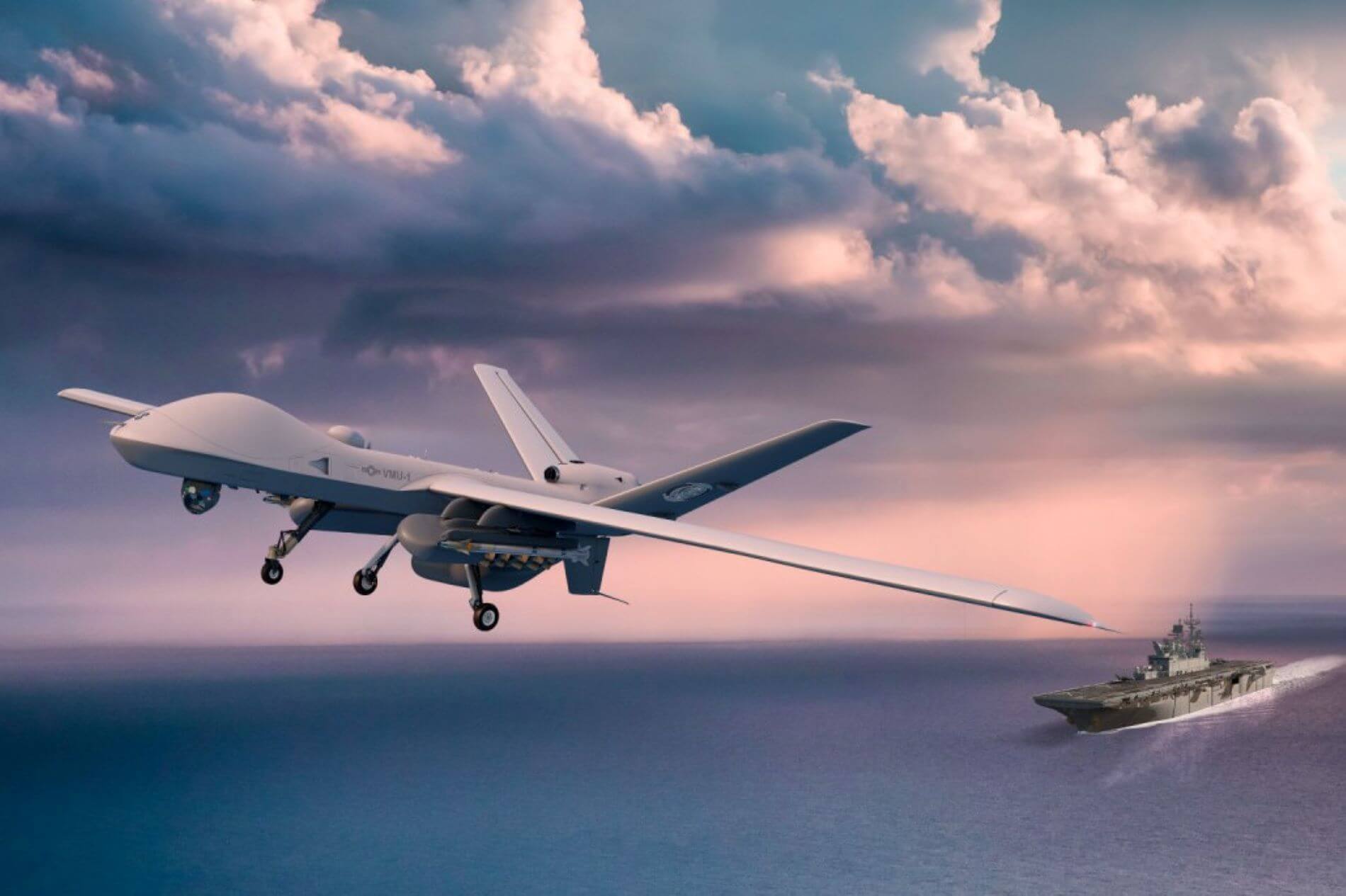
In a noteworthy development, the Indian Navy has submitted a substantial proposal to the Ministry of Defence, urging approval for the production and procurement of a second indigenous aircraft carrier. The Navy intends to recommend the project to Cochin Shipyard Limited, a move that signifies the nation’s commitment to strengthening its maritime capabilities. The Ministry of Defence is set to convene soon to evaluate and sanction the Navy’s proposal.
The second indigenous aircraft carrier, known as IAC-II, will undergo modifications to facilitate the deployment of Unmanned Combat Aerial Vehicles (UCAVs) and High-Altitude Long Endurance (HALE) Unmanned Aerial Vehicles (UAVs). These advanced aircraft are currently under development in collaboration with the Defence Research and Development Organization (DRDO) and will possess Short-Takeoff and Landing (STOL) capabilities. These unique aircraft can take off in as little as 586 feet and execute short landings within just 335 feet.
Continue readingSOURCE: RAUNAK KUNDE / NEWS BEAT / IDRW.ORG

India’s esteemed state-owned aerospace and defence company, Hindustan Aeronautics Limited (HAL), is embarking on a significant endeavour that promises to reshape the country’s military aviation capabilities. HAL is currently at the forefront of two groundbreaking helicopter programs: the Indian Multi-Role Helicopter (IMRH) designed for the Indian Air Force and Indian Army, and the Deck-based Multi-Role Helicopter (DBMRH) tailored for the Indian Navy. These ventures are expected to secure approximately 400 orders, ensuring the sustained operation of production lines well into 2045.
The IMRH program is poised to adopt an innovative approach by implementing the Special Purpose Vehicle (SPV) model, where private sector companies will hold a substantial stake in the newly formed entity. Production of the IMRH is scheduled to commence in 2031, initially producing six units annually. This rate will progressively increase to 12, 24, and eventually 30 units per year from 2035 onwards, with this pace maintained until 2044.
Continue readingSOURCE: RAUNAK KUNDE / NEWS BEAT / IDRW.ORG
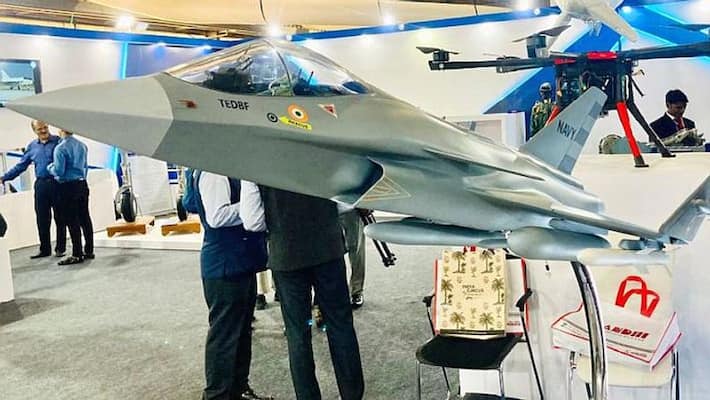
On the sidelines of the decommissioning ceremony of the last IL-38SD Sea Dragon Long Range Maritime Reconnaissance aircraft from operational service at India’s largest naval aviation base, INS Hansa, Chief of Naval Staff, Admiral R Hari Kumar, made an important announcement. He revealed that the prototype of the Twin Engine Deck Based Fighter (TEDBF), designed to operate from Indian Navy aircraft carriers, is set to be completed within the next four to five years.
The TEDBF represents a pivotal leap in India’s naval aviation endeavours. It is designed as a canard delta wing, twin-engine, carrier-based, multirole combat aircraft and is currently under development by the Aeronautical Development Agency (ADA). The manufacturing process for this cutting-edge aircraft will be handled by Hindustan Aeronautics Limited (HAL), a premier Indian aerospace and defence company.
Continue readingSOURCE: RAUNAK KUNDE / NEWS BEAT / IDRW.ORG

The Indian government is turning to the country’s private sector for the development of small gas turbines with thrust capabilities of 40 and 80 Kgf (Kilogram-force) for an upcoming Lottery ammunition program. These engines are envisioned as single-shaft turbine jet engines featuring a one-stage radial compressor, radial and axial diffuser, annular combustion chamber, one-stage axial turbine, and outlet nozzle.
In comparison, the Gas Turbine Research Establishment (GTRE) that developed the STFE engine, boasts a thrust capacity of 425 Kgf. This engine is intended for use in a 1-ton subsonic cruise missile program.
Continue readingSOURCE: RAUNAK KUNDE / NEWS BEAT / IDRW.ORG
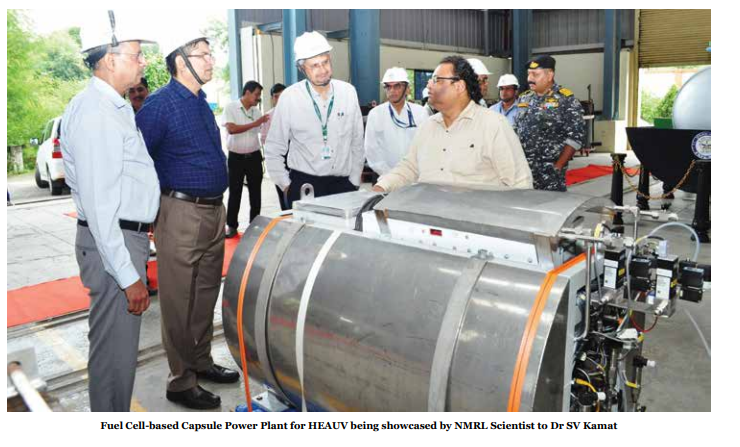
In a significant development for India’s naval capabilities, Dr. SV Kamat, Secretary of Defense Research and Development (DD R&D), and Chairman of the Defense Research and Development Organization (DRDO), recently paid a visit to the Naval Materials Research Laboratory (NMRL) in Ambernath. The primary purpose of this visit was to assess the progress of various projects undertaken by NMRL, with a particular focus on the ‘Fuel Cell-Based Air Independent Propulsion System (AIP) for Indian Naval Submarines.’
Dr. Kamat was warmly welcomed by Shri PT Rojatkar, OS & Director of NMRL, and the visit began with a comprehensive briefing on the status of the AIP program, as well as updates on other ongoing projects. The respective project teams provided detailed presentations, shedding light on the significant milestones achieved in these vital defence initiatives.
Continue readingSOURCE: RAUNAK KUNDE / NEWS BEAT / IDRW.ORG
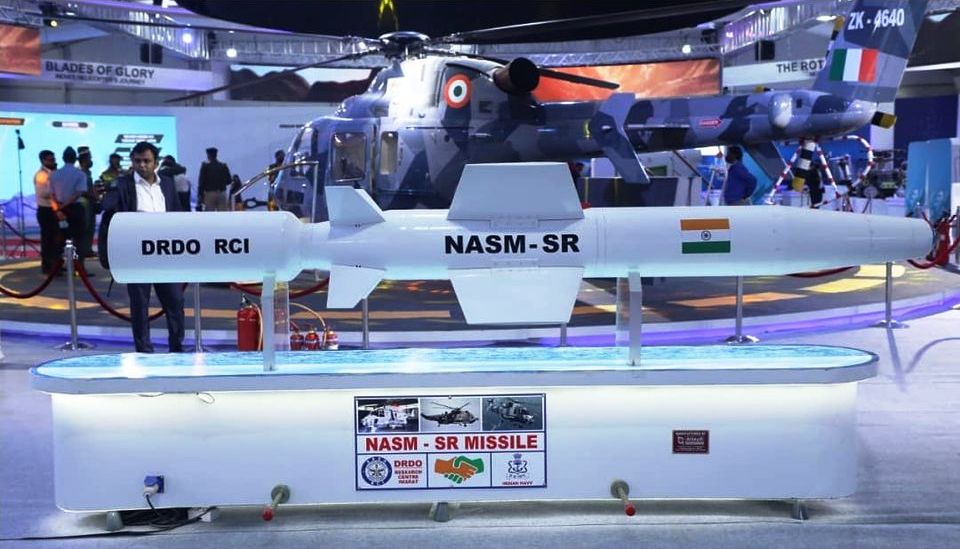
In the realm of cutting-edge aerospace technology and missile development, precision is paramount. The National Aerospace Laboratories (NAL) in India is leading the charge in the design and fabrication of wind tunnel models for the NASM-MR cruise vehicle, a subsonic cruise missile with applications in both ground and air launch scenarios. This endeavour represents a crucial step in fine-tuning the aerodynamic characteristics of this remarkable missile.
The NASM-MR, or New Generation Anti-Radiation Missile-Medium Range, is a subsonic cruise missile developed by the Defence Research and Development Organization (DRDO) in India.
Continue readingSOURCE: RAUNAK KUNDE / NEWS BEAT / IDRW.ORG

The Tejas MkII program has reached a pivotal stage as the Aeronautical Development Agency (ADA) is gearing up to place orders for components and parts crucial to the development and testing of four Tejas Mk2 aircraft. This significant move follows ADA securing an impressive 80 per cent Transfer of Technology (ToT) for the F-414 engines, setting the stage for the program’s advancement.
ADA had already initiated orders for smaller components earlier this year. Now, the program’s focus is shifting towards larger components as the necessary funds have started flowing in. To expedite production, many private sector companies involved in manufacturing the fuselage for the Tejas Mk1A program have been enlisted. Detailed designs have been shared, and contracts for the initial manufacturing of wings, front, mid, and rear fuselage components for the Tejas MkII program are set to be executed soon.
Continue readingSOURCE: RAUNAK KUNDE / NEWS BEAT / IDRW.ORG

In a significant move towards modernizing its fleet and embracing sustainable mobility, the Indian Army has issued a Request for Information (RFI) to procure approximately 423 electric motorcycles. These eco-friendly two-wheelers are slated to serve in the Peace Establishments and Units deployed in the plains and semi-hilly terrains across India.
The Ministry of Defence, under the Government of India, has set its sights on electric mobility, aligning with the nation’s larger commitment to reducing its carbon footprint. This endeavour not only represents a green shift but also a forward-looking approach to technological advancement in the realm of military transport.
Continue readingSOURCE: RAUNAK KUNDE / NEWS BEAT / IDRW.ORG
In a significant move to bolster its air defence capabilities, India is progressing swiftly with Project Kusha, a mission aimed at developing a state-of-the-art air defence system that rivals the effectiveness of the renowned S-400 system. This visionary initiative, greenlit by the Cabinet Committee on Security in May 2022, is now in full swing and has garnered considerable attention.
Project Kusha encompasses a multifaceted approach to enhance India’s air defence capabilities. The defence ministry recently granted the much-anticipated Acceptance of Necessity (AoN) for the acquisition of five squadrons of this advanced system, designed specifically for the Indian Air Force (IAF). This pivotal development comes with an estimated budget of Rs 21,700 crore, signifying the nation’s commitment to building a formidable defence infrastructure.
Continue readingSOURCE: RAUNAK KUNDE / NEWS BEAT / IDRW.ORG

The Aeronautical Development Agency (ADA) is taking significant steps to enhance the capabilities of the Light Combat Aircraft (LCA) Air Force Mk2. ADA has entered into collaboration with Safran Data Systems, a reputable French company, to facilitate software modifications for Unified Video Cum Digital Recorder (UVDR) Airborne Units and Ground Replay System (GRS).
This partnership aims to cater to additional requirements for the LCA Air Force Mk2, which is a crucial advancement in India’s defence technology.
Continue reading